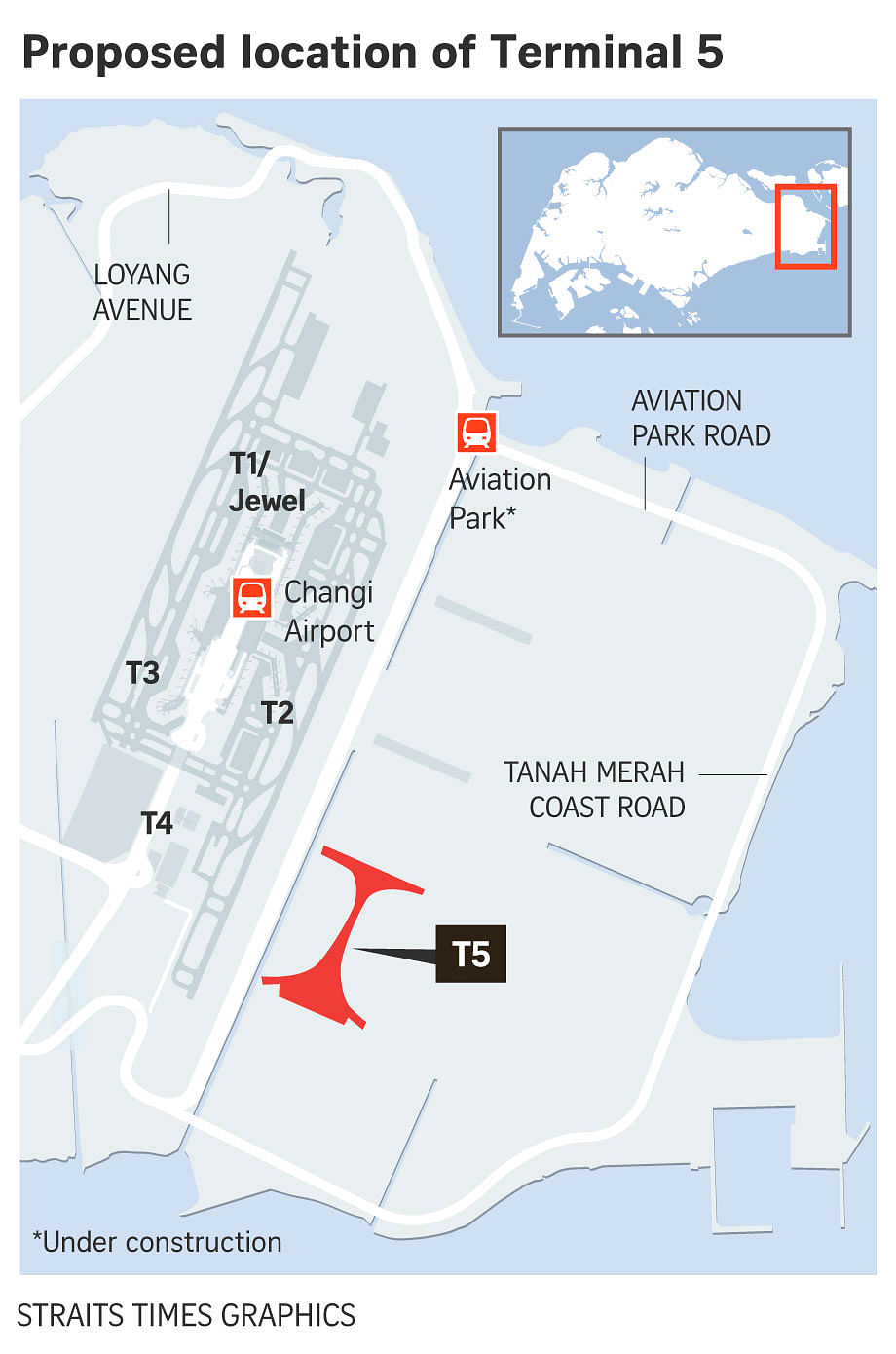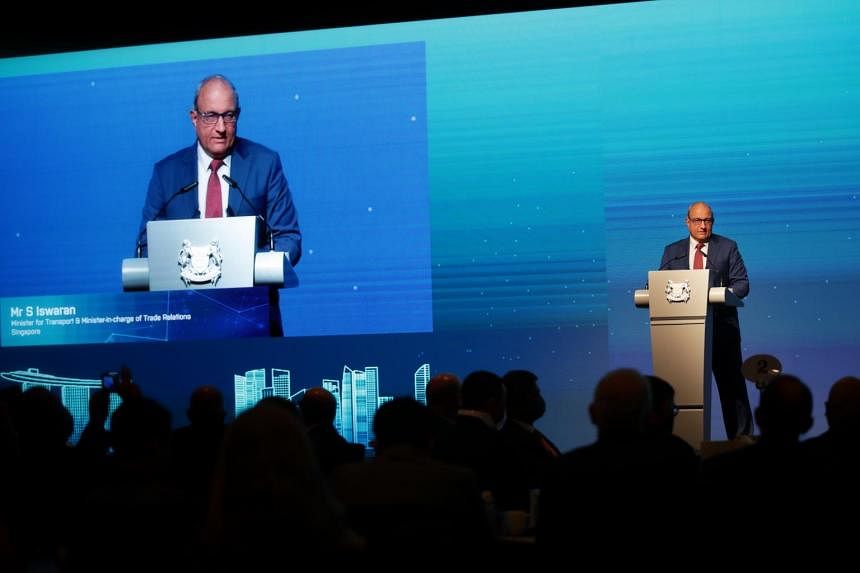SINGAPORE - Singapore will restart work on Changi Airport Terminal 5, with construction to kick off in two or thee years, as it seeks to build future capacity with the aviation industry recovering faster than expected from the pandemic.
Transport Minister S. Iswaran on Tuesday (May 17) said the Government is now ready to push on with its plans for the mega project, which was paused for two years, as current and projected air travel demand has provided “a renewed impetus” to increase capacity.
“We have taken the opportunity of the two-year hiatus to comprehensively review the T5 design to make it more modular and flexible, and enhance its resilience and sustainability,” he said.
“We will re-mobilise the design and engineering consultants progressively, to update and further refine the T5 design.”
Mr Iswaran said T5 will be operational by the mid-2030s, to meet an anticipated doubling of volume in the next two decades.
Work on T5 was put on hold in May 2020 when the Government said it would first focus on the Covid-19 challenge and wait to understand post-pandemic travel patterns better before resuming the project.
Mr Iswaran gave the update on T5 at the Changi Aviation Summit, which gathered more than 300 aviation leaders at the Sands Expo and Convention Centre to discuss the future of the sector. Attendees included International Air Transport Association director-general Willie Walsh and president of the council of the International Civil Aviation Organisation (ICAO) Salvatore Sciacchitano.
The return of international air travel in the first quarter of the year has been encouraging for the industry, although the region’s international passenger demand for March hovered at only 17 per cent of pre-Covid-19 levels. China, Hong Kong and Japan are the only key markets still closed in the Asia-Pacific.
Mr Walsh has said that international air travel is likely to recover to pre-Covid-19 levels by 2023, one year earlier than expected.
The number of passengers at Changi Airport crossed 40 per cent of pre-pandemic levels in May, nearing the Government's target of 50 per cent by the year end.
Mr Iswaran said recovery in the Asia-Pacific is expected to gain momentum over the coming months, and other airports are also likely to expand.
“Many airports had put in place expansion plans before the pandemic,” he said. “These plans would now have to be revisited to safely, seamlessly and sustainably support a return to pre-pandemic rates of growth in air travel.”
New airports in South-east Asia planned before the pandemic include the new Phnom Penh International Airport in Cambodia and the Soekarno-Hatta International Airport II in Indonesia.
Changi Airport’s T5 was to handle up to 50 million passengers a year in its initial phase, and cover a land area equivalent to about 667 football fields. It is not clear if these parameters have changed.

Mr Chen Chuanren, South-east Asia and China editor for Air Transport World, said T5’s resumption is important, with many countries harbouring strong ambitions to be a hub for South-east Asia.
He expects T5 to be more “plug and play”, with spaces that can easily be converted to accommodate testing centres or quarantine rooms when there is such a need, while still being able to be used as event spaces or lounge areas in normal times.
Inbound and departure passengers will also be more carefully segregated, while amenities will be more compatible with new technologies such as sustainable aviation fuels.
“It’s always by constantly improving your capability and future-proofing yourself that you can be more relevant in a more unpredictable future,” he said.
On Tuesday, Singapore also committed US$1.6 million (S$2.2 million) over the next three years to fund training programmes for aviation professionals in developing countries, signing an agreement with ICAO.
It has trained 1,500 participants from 130 states since 2001 under the ICAO Developing Countries Training Programme, involving the Singapore Aviation Academy, the training arm of the Civil Aviation Authority of Singapore.
“We will always remember and are grateful for the assistance and training offered by other states from which Singapore benefited greatly in our early years of nation building,” Mr Iswaran said.
“We are therefore happy and honoured to be able to do our part in continuing that fine tradition... and make global aviation more inclusive.”



